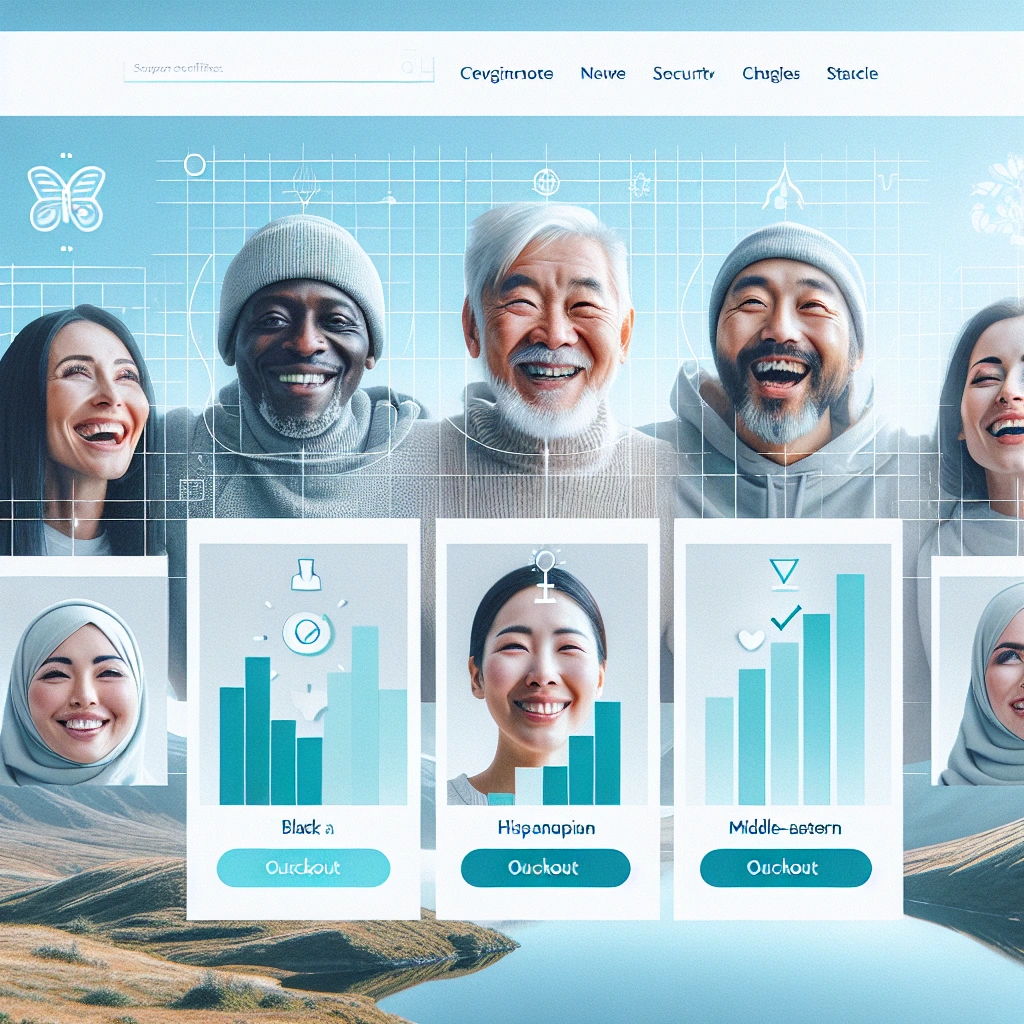

Understanding psychology is crucial in influencing user behavior. The impact of psychology on user behavior is significant, as it affects how users perceive, engage with, and make decisions about products and services.
By recognizing and understanding the psychological factors that influence consumer behavior, businesses and designers can create more effective strategies to influence user behavior.
Psychology plays a key role in shaping user behavior, making it important to have a deep understanding of how individuals think, feel, and act. Factors such as motivation, perception, learning, and attitude can significantly influence how users interact with products and services.
By recognizing and understanding these psychological factors, businesses and designers can create more user-friendly and engaging experiences, ultimately influencing user behavior in a positive way.
The importance of understanding psychology in influencing user behavior cannot be overstated. By recognizing and leveraging psychological factors that influence consumer behavior, businesses and designers can create more effective strategies to influence user behavior and ultimately improve the overall user experience.
Check out this Youtube video: Learn how website color psychology can influence user behavior with real-life examples in this informative and engaging video!
The Role of Psychology in User Behavior
Psychology plays a pivotal role in shaping user decision-making. By understanding the psychological factors influencing users, businesses can tailor their strategies to align with user motivations and behaviors.
For example, using color psychology in branding and marketing materials to evoke specific emotions or incorporating social proof to leverage the psychological tendency to follow the actions of others.
How psychology shapes user decision-making
Psychology profoundly shapes user decision-making by tapping into emotional triggers, cognitive biases, and social influences. For instance, the mere exposure effect demonstrates how repeated exposure to a product or brand can enhance user preference.
Additionally, the anchoring bias influences users to rely heavily on the first piece of information they receive when making decisions. Businesses can leverage these insights to optimize their user interfaces and marketing strategies.
Impact of cognitive biases on user behavior
Cognitive biases exert a significant impact on user behavior. Take, for instance, the availability heuristic, where users give greater weight to readily available information.
By understanding and addressing these biases, businesses can design interfaces and content that minimize the negative effects of cognitive biases and enhance the overall user experience.
The connection between psychology and user experience design
Psychology and user experience design are intricately linked, as understanding human behavior and decision-making processes is crucial for creating intuitive and engaging user interfaces. Using psychological principles such as Gestalt psychology, designers can create focal points and guide users through websites and applications more effectively.
For example, by leveraging the principle of proximity, designers can group related elements together to enhance user comprehension and navigation.
Understanding User Psychology
What drives user behavior
User behavior is driven by a complex interplay of psychological, social, and personal factors. The psychological factors encompass individual perceptions, attitudes, and motivations.
For instance, an individual’s perception of product quality or their motivation to seek social validation can heavily influence their behavior. Social factors, on the other hand, involve the impact of family, peers, and societal norms on decision-making.
Personal factors, including age, lifestyle, and personality, also play a pivotal role in shaping user behavior.
The influence of emotions on user decision-making
Emotions hold a powerful sway over user decision-making. When individuals experience joy, fear, or excitement, their decision-making is significantly influenced.
For example, a user feeling excited about a product is more likely to make a purchase than someone who feels neutral. Brands often leverage emotional marketing to establish deep connections with users, creating a sense of loyalty and attachment.
The role of cognitive psychology in understanding user behavior
Cognitive psychology delves into the mental processes that shape user behaviors and decisions. It involves understanding how individuals perceive, think, and process information, which is crucial for designing user experiences.
By grasping cognitive patterns such as attention, memory, and problem-solving, designers can create more intuitive interfaces and improve overall user satisfaction.
| Psychological Factors | Social Factors | Personal Factors |
|---|---|---|
| Individual perceptions | Impact of peers | Age, lifestyle |
| Attitudes and motivations | Societal norms | Personality |
The interplay of these factors creates a rich tapestry of user behavior, offering valuable insights for businesses and UX designers alike. Understanding the intricate landscape of user psychology and the factors influencing behavior is critical for creating engaging experiences and fostering lasting connections.
Understanding user psychology, emotions, and cognitive processes is essential for businesses aiming to create impactful user experiences and drive customer loyalty. By acknowledging the multifaceted nature of user behavior and the influential role of emotions, businesses can tailor their strategies to resonate with their audience on a deeper level.
Similarly, integrating principles of cognitive psychology into design processes can lead to more intuitive interfaces and heightened user satisfaction. By comprehending and leveraging psychological insights, businesses can forge enduring connections with their audience and drive sustained success.
Psychological Techniques for Influencing User Behavior
The use of social proof to influence user behavior
Social proof is a powerful psychological phenomenon where individuals mimic the actions of others in uncertain situations. By showcasing testimonials, reviews, and case studies, businesses can influence user behavior positively.
For example, displaying customer testimonials on a product page can create a sense of trust and reliability, leading to increased conversions.
Leveraging the scarcity principle to drive user actions
The scarcity principle capitalizes on people’s fear of missing out, motivating them to take action. Limited-time offers, exclusive releases, and restricted edition products leverage scarcity to drive user actions.
For instance, “limited stock available” messages create a sense of urgency, prompting users to make a purchase decision before the opportunity vanishes.
The impact of authority in influencing user decisions
The concept of authority plays a significant role in influencing user decisions. Expert opinions, endorsements, and industry certifications can sway user behavior.
For example, featuring renowned industry experts’ endorsements on a product can instill confidence in users, leading to increased adoption and loyalty.
Using reciprocity to influence user behavior
Reciprocity, the principle of returning a favor, can be employed to influence user behavior positively. Offering free trials, samples, or valuable resources without expecting an immediate return can foster a sense of obligation in users.
For example, providing a free e-book in exchange for an email subscription can stimulate reciprocity, driving user engagement and loyalty.
| Psychological Technique | Example |
|---|---|
| Social Proof | Featuring customer testimonials on the website |
| Scarcity Principle | Offering limited-time promotions and exclusive releases |
| Authority Impact | Showcasing expert endorsements on products |
| Reciprocity | Providing valuable resources to users without immediate expectation |
By strategically implementing these psychological techniques, businesses can effectively influence user behavior and drive meaningful engagement with their products and services.
Applying Psychology in User Experience Design
How to enhance user experience through psychology
To enhance user experience through psychology, it’s essential to understand the psychological principles that influence human perception, cognition, emotion, and motivation. By leveraging concepts such as anchoring, cost-benefit analysis, and user psychology, you can design interfaces that cater to the users’ needs and preferences, ultimately leading to a more engaging and satisfying experience.
Incorporating psychological principles in website and app design
Incorporating psychological principles in website and app design involves simplifying interfaces, reducing unnecessary complexities, and using familiar patterns. By applying cognitive psychology principles like chunking information, providing clear hierarchies, and understanding user behavior, designers can ensure that the interface is intuitive, informative, and easy to navigate, thus enhancing user engagement and satisfaction.
Using psychology to optimize user interfaces and interactions
Using psychology to optimize user interfaces and interactions means understanding the profound impact of user psychology on interface design. From color schemes to button placement, by incorporating the knowledge of psychology into user experiences, designers can create effective interactions that cater to the users’ emotions, needs, and journey flow.
By leveraging user psychology and human behavior, UX designers can enhance the overall user experience, making it more satisfying for the target audience.
Psychology Principles in User Experience Design
| Psychology Principle | Application in Design |
|---|---|
| Anchoring | Focusing attention on key points |
| Cost-Benefit Analysis | Highlighting benefit over cost |
| User Psychology | Understanding user needs, preferences, and motivations |
| Cognitive Psychology | Chunking information, providing clear hierarchies, and patterns |
Understanding and applying these psychology principles in user experience design can significantly improve the effectiveness and satisfaction of website and app design, ultimately leading to a more engaging and seamless user experience.
Leveraging Psychology in Marketing Strategies
The use of psychology in creating effective marketing campaigns
Psychology plays a crucial role in crafting effective marketing campaigns. By understanding consumer behavior and decision-making processes, marketers can tailor their messaging, imagery, and branding to resonate with their target audience on a deeper psychological level.
For example, using color psychology to evoke specific emotions and incorporating social proof through customer testimonials are common tactics to create impactful marketing campaigns.
Applying psychological techniques in advertising and promotion
In advertising and promotion, psychological techniques are employed to influence consumer perceptions and behaviors. Marketers utilize language that elicits emotions and thoughts, promoting trust and reliability in their brand messaging.
By tapping into consumer psychology, advertisements can be designed to trigger specific emotional responses, leading to a more profound impact on the audience and driving desired actions.
Using consumer psychology to drive purchase decisions
Consumer psychology heavily influences purchase decisions. By leveraging psychological triggers like emotional branding, social proof, and color psychology, brands can sway consumer perceptions and sway their choices.
Through the strategic application of psychological principles, marketers can effectively connect with their audience, engender trust, and ultimately drive purchase decisions.
| Psychological Tactics | Impact on Marketing |
|---|---|
| Emotional Branding | Resonates with target audience, influences purchasing decisions |
| Social Proof | Builds trust, reinforces brand credibility, aids in decision-making |
| Color Psychology | Elicits specific emotions, influences consumer perceptions and actions |
Remember, understanding and leveraging psychology in marketing is not about manipulation, but rather about creating authentic connections and resonating with the audience on a deeper emotional level.
Case Studies: Psychology Influence User Behavior Example
Real-world examples of psychology influencing user behavior
-
In the online shopping realm, the use of scarcity psychology, where limited availability of products influences user behavior. For example, when a product is labeled as “only 2 left in stock,” it triggers a sense of urgency, compelling users to make immediate purchase decisions.
-
Social proof is an influential psychological tactic observed in social media platforms. On platforms like Instagram, the number of likes and followers acts as social proof, influencing user behavior by shaping perceptions of popularity and trustworthiness.
Case studies demonstrating the impact of psychological techniques on user actions
- Amazon’s use of “People who bought this also bought…” creates a psychological influence known as associative memory, driving users to make additional purchases based on similar consumer actions.
Analysis of successful applications of psychology in user behavior influence
- The use of persuasive language in call-to-action buttons, such as “Join the VIP Club Now,” harnesses the power of psychology to encourage user interaction and participation.
| Psychology Tactic | Application | Impact on User Behavior |
|---|---|---|
| Scarcity Psychology | Online Shopping | Creates urgency for purchases |
| Social Proof | Social Media Platforms | Shapes perceptions and trust |
| Associative Memory | E-commerce (e.g. Amazon) | Encourages additional purchases |
| Persuasive Language | Call-to-action Buttons | Encourages user interaction |
This table showcases real-world examples and applications of psychology influencing user behavior, from scarcity and social proof to associative memory and persuasive language, highlighting the profound impact of psychological tactics on user actions.
Ethical Considerations in Using Psychology to Influence User Behavior
The ethical implications of leveraging psychology in user behavior influence are profound. It brings into question the boundaries of ethical conduct and the potential impact on user autonomy and decision-making.
As we delve into the realm of psychology to influence user behavior, it becomes imperative to address the moral dimension, ensuring that our actions align with ethical standards.
How to ensure responsible and ethical use of psychological techniques in user interactions is a critical consideration. It necessitates transparent communication with users regarding the psychological strategies employed to influence their behavior.
Moreover, prioritizing informed consent and avoiding deceptive tactics is paramount in upholding ethical standards.
Psychology Influence User Behavior Example in E-Commerce
The application of psychology in driving online purchase decisions
The application of psychology in driving online purchase decisions involves leveraging principles such as social proof, scarcity, and loss aversion to influence consumers. For example, using social proof through customer reviews and testimonials can create a sense of trust and influence purchase decisions.
Psychological techniques used in e-commerce to influence user behavior
In e-commerce, psychological techniques like reciprocity, social proof, and visual appeal are utilized to influence user behavior. For instance, offering free samples or gifts (reciprocity) can trigger a sense of obligation in customers, impacting their buying decisions.
Case studies of successful psychology-driven e-commerce strategies
A notable case study of successful psychology-driven e-commerce strategies is Amazon’s implementation of personalized recommendations based on user behavior. By analyzing consumer behavior and providing tailored product suggestions, Amazon significantly enhances user engagement and drives conversions.
Leveraging Psychology in Social Media Engagement
How psychology influences user behavior on social media platforms
The psychology of social media plays a crucial role in influencing user behavior on various platforms. For example, the implementation of social proof through user testimonials and reviews on products or services significantly influences users to make purchasing decisions.
Additionally, the concept of scarcity, where limited offers are highlighted, leverages psychological principles to prompt immediate action from users.
The psychological impact of social media interactions on user engagement
Social media interactions have a profound psychological impact on user engagement. For instance, the use of interactive content such as polls, quizzes, and contests triggers a sense of participation and belonging among users.
Moreover, the principle of reciprocity, whereby users feel inclined to engage with content after receiving engagement from others, further enhances user interactions and engagement on social media platforms.
Strategies for leveraging psychology to drive social media interactions
There are several effective strategies for leveraging psychology to drive social media interactions. For example, understanding and utilizing the psychology of colors can significantly impact user engagement.
Employing vibrant and appealing colors in visual content can evoke specific emotions and prompt desired actions from users. Additionally, integrating storytelling techniques to create relatable and emotionally compelling narratives can captivate users’ attention and drive meaningful interactions on social media platforms.
| Psychology Principle | Example in Social Media |
|---|---|
| Social Proof | Displaying customer reviews and testimonials to influence purchase decisions |
| Scarcity | Highlighting limited-time offers to prompt immediate action from users |
| Reciprocity | Encouraging user engagement through interactive content and responding to user interactions |
| Psychology of Colors | Utilizing vibrant and appealing colors in visual content to evoke emotional responses from users |
| Storytelling Techniques | Creating relatable and emotionally compelling narratives to captivate users’ attention and drive meaningful interactions |
Understanding and effectively leveraging psychological principles are essential in driving user behavior and engagement on social media platforms. By strategically implementing these principles, businesses and content creators can optimize their social media strategies to foster meaningful interactions and drive desired outcomes.
The Future of Psychology Influence on User Behavior
Emerging trends in the use of psychology to influence user behavior
The use of psychology to influence user behavior is witnessing several emerging trends. One notable trend is the increasing integration of artificial intelligence (AI) in understanding and predicting user behavior.
Psychologists are leveraging AI to analyze data from sources like social media activity, credit card spending, and smartphone metrics, providing valuable insights into user behavior. Additionally, there is a growing emphasis on the role of cognitive psychology in shaping user experiences, particularly in the realm of digital design.
Understanding cognitive psychology principles enables designers to create more intuitive and engaging products that cater to users’ mental models, thereby influencing their behavior.
The evolving role of psychology in shaping user interactions
Psychology is continuously evolving to play a pivotal role in shaping user interactions. One significant aspect is the crucial role of psychology in user interface (UI) and user experience (UX) design.
Emotions play a vital role in shaping user experiences, and successful UI/UX design aims to evoke positive emotions and engage users on an emotional level. This evolution highlights the significance of psychological theories in designing interfaces that resonate with users, ultimately influencing their interactions.
Moreover, psychology is increasingly being called upon in web design to navigate the user mind, as it fundamentally influences how users perceive and interact with websites. This evolution underscores the substantial impact of psychology on user behavior and interactions in the digital landscape.
Predictions for the future of psychology-based user behavior influence
Looking ahead, the future of psychology-based user behavior influence is expected to be transformative due to advancements in technology and data analytics. Psychologists are increasingly called upon to promote equity, diversity, and inclusion, and this trend is anticipated to accelerate further, with psychologists playing pivotal roles in addressing societal challenges.
Furthermore, the integration of AI is set to change every aspect of psychology, unlocking troves of new data on human behavior and providing the power to analyze it. The predictive mechanism of human behavior modeling, facilitated by deep learning approaches, is poised to revolutionize the understanding and anticipation of user behavior.
The future landscape presents a paradigm shift where psychology and technology synergistically influence and predict user behavior, shaping interactions and experiences in unprecedented ways.
| Emerging Trends | Evolving Role | Future Predictions |
|---|---|---|
| AI Integration for Understanding User Behavior | Crucial Role of Psychology in UI/UX Design | Transformative Impact of AI and Predictive Mechanisms |
| Increased Emphasis on Cognitive Psychology Principles | Significance of Psychology in User Interactions | Accelerated Focus on Equity and Diversity |
| Informed Web Design Based on User Psychology | Psychological Theories in Designing User Interfaces | Advancements in AI for Understanding and Analyzing Behavior |
The future of psychology’s influence on user behavior presents a dynamic landscape marked by the integration of cutting-edge technologies, the crucial role of psychology in shaping user interactions, and the transformative predictions for psychology-based user behavior influence. These trends underscore the evolving and indispensable role of psychology in understanding, predicting, and shaping user behavior across various domains, heralding a future where psychology and technology converge to redefine user experiences and interactions.
Keep making psychology great again!
Recommended Amazon Products for Psychology-Influenced User Behavior
Here’s a curated list of products that can help you understand and leverage psychology to influence user behavior. These recommendations are based on relevance to the topic, quality, and user reviews.
1. Ring Alarm 8-Piece Kit


The Ring Alarm 8-Piece Kit offers a comprehensive solution for enhancing home security, influencing user behavior to prioritize safety and peace of mind. This product provides easy installation and integration with smart home devices.
You can find the Ring Alarm 8-Piece Kit on Amazon by searching for “Ring Alarm 8-Piece Kit”.
| Pros | Cons |
|---|---|
| Includes multiple sensors | Requires a subscription for professional monitoring |
| Seamless integration with smart devices | Additional components may be needed for larger homes |
2. Fitbit Inspire 2 Health & Fitness Tracker


The Fitbit Inspire 2 Health & Fitness Tracker utilizes psychological principles to motivate users toward achieving their health and fitness goals. It provides activity tracking, heart rate monitoring, and sleep analysis, influencing positive behavior change.
Search for “Fitbit Inspire 2 Health & Fitness Tracker” on Amazon to explore its features.
| Pros | Cons |
|---|---|
| Tracks various health metrics | Screen may be small for some users |
| Offers guided breathing sessions | Limited functionality compared to higher-tier Fitbit models |
3. Influence: The Psychology of Persuasion by Robert B. Cialdini


“Influence: The Psychology of Persuasion” by Robert B. Cialdini is a valuable resource for understanding the principles that drive human behavior. This book explores psychological techniques for influencing decisions and actions, making it an essential read for marketers and UX designers.
Find “Influence: The Psychology of Persuasion” on Amazon to gain insights into user behavior influence.
| Pros | Cons |
|---|---|
| Well-researched and insightful | May require additional interpretation for practical application |
| Offers practical examples and case studies | Focuses more on psychological principles than specific tactics |
4. Philips SmartSleep Wake-Up Light


The Philips SmartSleep Wake-Up Light leverages psychology by simulating a natural sunrise and sunset to improve wakefulness and sleep quality. By aligning with natural circadian rhythms, it influences more restful sleep and energized awakenings.
Search for “Philips SmartSleep Wake-Up Light” on Amazon to experience its benefits.
| Pros | Cons |
|---|---|
| Gradual sunrise simulation for gentle awakening | Premium price compared to traditional alarm clocks |
| Relaxing sunset simulation for improved sleep | Limited customization options for light intensity |
5. Blink Mini Compact Indoor Smart Security Camera


The Blink Mini Compact Indoor Smart Security Camera incorporates psychology-influenced features such as motion detection and two-way audio to enhance home security. It influences user behavior by providing peace of mind and visual deterrence against intruders.
Search for “Blink Mini Compact Indoor Smart Security Camera” on Amazon to discover its capabilities.
| Pros | Cons |
|---|---|
| Alexa compatibility for voice control | Cloud storage subscription required for longer video retention |
| Easy setup and installation | Some users may prefer a wider field of view |
Top Recommended Product for Psychology-Influenced User Behavior
If you’re looking for the best solution to understand and leverage psychology to influence user behavior, we highly recommend “Influence: The Psychology of Persuasion” by Robert B. Cialdini. This insightful book offers a deep dive into the psychological principles that drive decision-making and behavior.
Ready to enhance your understanding of user behavior influence? Check out “Influence: The Psychology of Persuasion” on Amazon today for valuable insights!
Conclusion
Psychology plays a significant role in influencing user behavior, as seen in the example of color psychology. The way colors are used in marketing and design can evoke specific emotions and actions from users, ultimately impacting their behavior.
Furthermore, the principle of social proof is another example of how psychology influences user behavior. When users see others engaging with a product or service, they are more likely to follow suit, driven by the psychological need to belong and conform to social norms.
Lastly, the concept of scarcity is a clear demonstration of how psychology can influence user behavior. Creating a sense of urgency or limited availability can trigger a fear of missing out, leading users to take immediate action, such as making a purchase or signing up for a service.












